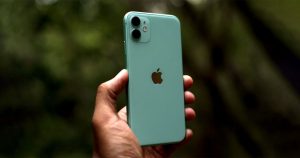
Tardigrades, also known as water bears, are microscopic animals that can survive for years without food or water. And now they’re on the moon!
Getty Images
It was just before midnight on April 11 and everyone at the Israel Aerospace Industries mission control center in Yehud, Israel, had their eyes fixed on two large projector screens. On the left screen was a stream of data being sent back to Earth by Beresheet, its lunar lander, which was about to become the first private spacecraft to land on the moon. The right screen featured a crude animation of Beresheet firing its engines as it prepared for a soft landing in the Sea of Serenity. But only seconds before the scheduled landing, the numbers on the left screen stopped. Mission control had lost contact with the spacecraft, and it crashed into the moon shortly thereafter.
Half a world away, Nova Spivack watched a livestream of Beresheet’s mission control from a conference room in Los Angeles. As the founder of the Arch Mission Foundation, a nonprofit whose goal is to create “a backup of planet Earth,” Spivack had a lot at stake in the Beresheet mission. The spacecraft was carrying the foundation’s first lunar library, a DVD-sized archive containing 30 million pages of information, human DNA samples, and thousands of tardigrades, those microscopic “water bears” that can survive pretty much any environment—including space.
But when the Israelis confirmed Beresheet had been destroyed, Spivack was faced with a distressing question: Did he just smear the toughest animal in the known universe across the surface of the moon?
SpaceIL’s Beresheet was the first privately funded lunar lander to attempt to touch down on the moon. It ended with a crash on April 11.
In the weeks following the Beresheet crash, Spivack pulled together the Arch Mission Foundation’s advisers in an attempt to determine whether the lunar library had survived the crash. Based on their analysis of the spacecraft’s trajectory and the composition of the lunar library, Spivack says he is quite confident that the library—a roughly DVD-sized object made of thin sheets of nickel—survived the crash mostly or entirely intact. In fact, the decision to include DNA samples and tardigrades in the lunar library may have been key to its survival.
“For the first 24 hours we were just in shock,” Spivack says. “We sort of expected that it would be successful. We knew there were risks but we didn’t think the risks were that significant.”
Spivack is no stranger to the hazards of space exploration. In the late 1990s, the serial entrepreneur used money from his web company’s initial public offering to hitch a ride to the edge of space with the Russian Air Force and to become an angel investor in the Zero Gravity Corporation, which commercialized parabolic flights in the US. But when Spivack founded the Arch Mission Foundation in 2015, he wanted to do something different. The plan was to create archives of all human knowledge that could last for millions, if not billions, of years, and to seed them across Earth and throughout the solar system.
The Arch Mission Foundation sent its first archive to space in 2018 in the glove compartment of Elon Musk’s Tesla, which is now in a 30-million-year orbit around the sun. That archive contains Isaac Asimov’s Foundation trilogy, which is inscribed in a quartz disc using an experimental 5D optical technology developed by physicists at the University of Southampton. But that storage medium has limitations. Digital technologies and encoding standards are great for compressing lots of information into a small amount of space, but they are also short-lived—how many people do you know who could play a VHS tape today? If you want to create a library for humans thousands or millions of years in the future, your best bet is to keep it analog.
But analog storage takes up a lot of room. So sending the bulk of human knowledge to space will require a lot of compression. To do this, Spivack tapped Bruce Ha, a scientist who developed a technique for engraving high-resolution, nano-scale images into nickel. Ha uses lasers to etch an image into glass and then deposits nickel, atom by atom, in a layer on top. The images in the resulting nickel film look holographic and can be viewed using a microscope capable of 1000x magnification—a technology that has been available for hundreds of years.
The lunar library on the Beresheet lander consisted of 25 layers of nickel, each only a few microns thick. The first four layers contain roughly 30,000 high-resolution images of book pages, which include language primers, textbooks, and keys to decoding the other 21 layers. Those layers hold nearly all of the English Wikipedia, thousands of classic books, and even the secrets to David Copperfield’s magic tricks.
The lunar library includes thousands of high-resolution images of book pages compressed into just a few square inches.
Bruce Ha
A copy of the first layer of the lunar library on the Beresheet lunar lander. The actual lunar library has the center image removed.
Bruce Ha
Spivack had planned to send DNA samples to the moon in future versions of the lunar library, not on this mission. But a few weeks before Spivack had to deliver the lunar library to the Israelis, however, he decided to include some DNA in the payload anyway. Ha and an engineer on Spivack’s team added a thin layer of epoxy resin between each layer of nickel, a synthetic equivalent of the fossilized tree resin that preserves ancient insects. Into the resin they tucked hair follicles and blood samples from Spivack and 24 others that he says represent a diverse genetic cross-section of human ancestry, in addition to some dehydrated tardigrades and samples from major holy sites, like the Bodhi tree in India. A few thousand extra dehydrated tardigrades were sprinkled onto the tape used to secure the lunar library to the Beresheet lander.
The promising thing about the tardigrades, says Spivack, is that they could hypothetically be revived in the future. Tardigrades are known to enter dormant states in which all metabolic processes stop and the water in their cells is replaced by a protein that effectively turns the cells into glass. Scientists have revived tardigrades that have spent up to 10 years in this dehydrated state, although in some cases they may be able to survive much longer without water. Although the lunar library is designed to last for millions of years, scientists are just beginning to understand how tardigrades manage to survive in so many unforgiving environments. It’s conceivable that as we learn more about tardigrades, we’ll discover ways to rehydrate them after much longer periods of dormancy.
Spivack says that adding the DNA-filled resin to the lunar library at the last minute was a major risk, because any mistakes in how it was incorporated could have ruined the nickel engravings. In retrospect, however, it may have been what saved the library from destruction. The resin layers added a significant amount of strength to the lunar library, which made it less likely to break apart upon impact. Moreover, Spivack says that the heat generated by the impact wasn’t high enough to melt the nickel layers, which were themselves encased in several protective layers to block radiation. “Ironically, our payload may be the only surviving thing from that mission,” Spivack says.
In the best-case scenario, Beresheet ejected the Arch Mission Foundation’s lunar library during impact and it lies in one piece somewhere near the crash site. But Spivack says that even if the library broke into pieces, their analysis shows that these fragments would be large enough to retrieve most of the analog information in the first four layers. As for whether any of the DNA or tardigrades are still intact, that’s anyone’s guess, but Spivack says there’s no reason to worry about water bears taking over the moon. Any lunar tardigrades found by future humans will have to be brought back to Earth or somewhere with an atmosphere in order to rehydrate them. Whether this will be enough to bring them back to life, however, remains to be seen.
Fortunately for Spivack and the Arch Mission Foundation, spewing DNA and water bears across the moon is totally legal. NASA’s Office of Planetary Protection classifies missions based on the likelihood that their targets are of interest to our understanding of life. As such, missions destined for places like Mars are subject to more stringent sterilization processes than missions to the Moon, which has few of the necessary conditions for life and isn’t at risk of contamination. In fact, Spivack isn’t even the first to leave DNA on the moon. This honor belongs to the Apollo astronauts, who left nearly 100 bags of human feces on the lunar surface before they returned to Earth.
This is good news for Spivack, who wants to incorporate more DNA into future libraries on the moon and beyond. This fall, Spivack says the Arch Mission Foundation will be launching a crowdfunding campaign that will solicit DNA samples from volunteers to include on the next moon mission, as well as DNA from endangered species. In addition, Spivack also plans to send vast troves of information coded in synthetic DNA. The advantage of DNA storage is that it’s easy to make thousands of copies to ensure redundancy, and you can fit terabytes of data in a small vial of liquid. Indeed, the Arch Mission Foundation has already figured out how to encode the English Wikipedia in synthetic DNA, which will hitch a ride to the lunar surface with Astrobotic, a company that was formed to work on the Google Lunar X Prize, in 2021.
“Our job, as the hard backup of this planet, is to make sure that we protect our heritage—both our knowledge and our biology,” says Spivack. “We have to sort of plan for the worst.”
Creating a backup of the entire planet is the sort of high-minded idealism associated with the titans of Silicon Valley, but Spivack is well on his way to turning it into a reality. And as the world grapples with the fallout from climate change, the prospect of nuclear war, and even killer asteroids, creating a backup of human civilization doesn’t sound like such a bad idea after all.
More Great WIRED Stories
- How a 6,000-year-old dog cancer spread around the world
- These chaotic games are a referee’s worst nightmare
- Did this international drug dealer create bitcoin? Maybe!
- How Loon’s balloons find their way to deliver the internet
- Social media could make it impossible to grow up
- ? Upgrade your work game with our Gear team’s favorite laptops, keyboards, typing alternatives, and noise-canceling headphones
- ? Want more? Sign up for our daily newsletter and never miss our latest and greatest stories



